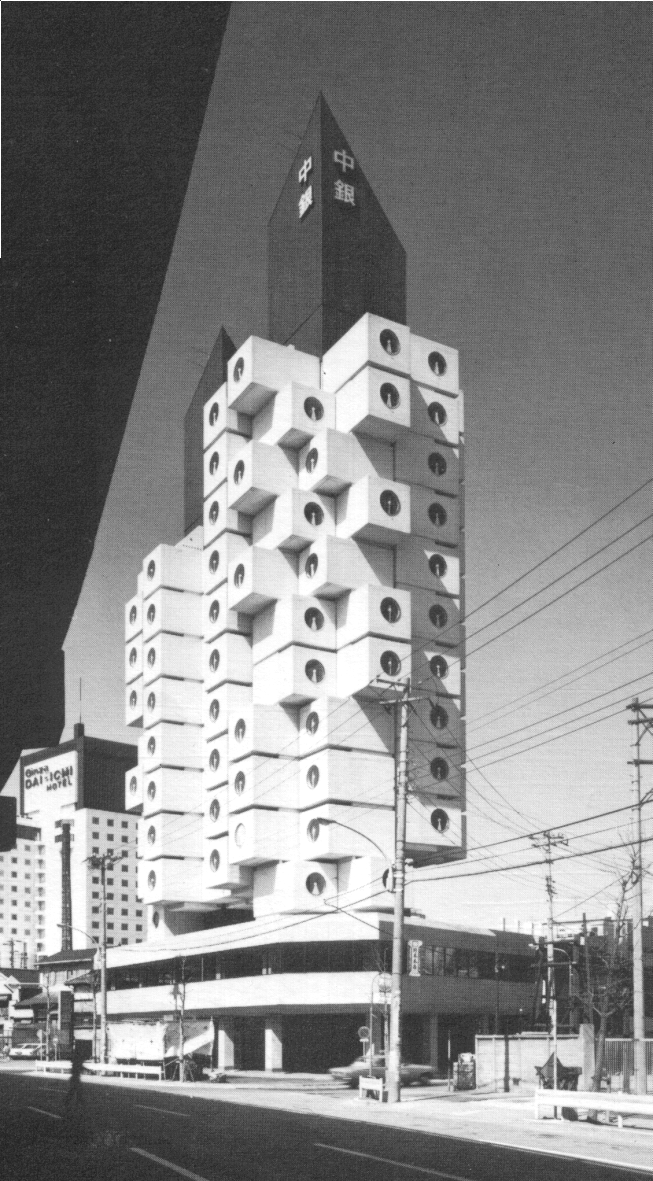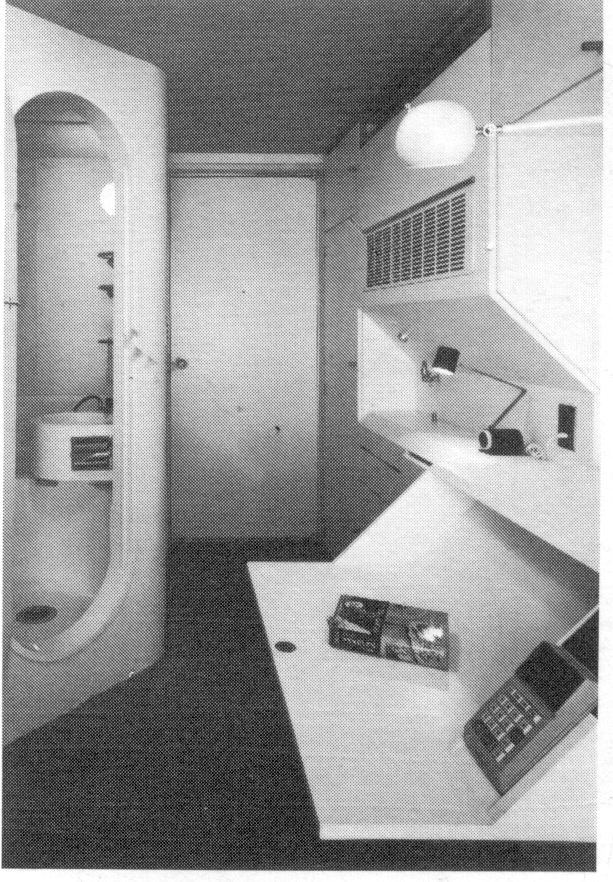|
|
| Notable Features | |
|
|
Prefabricated modular residential construction |
| Basic Information | |
| Location : | |
| Ginza, Tokyo, Japan | |
| Building Type : | |
| Residential | |
| Contract Period : | |
|
Design/Construction 1970-1972 |
|
| Building Area : | |
| 429.51 m2 | |
| Total Floor Area : | |
| 3,091.23 m2 | |
| Architect : | |
| Kisho Kurokawa | |
|
|
|
| . | |
| Overview | |
  |
|
| This building was the world’s first capsule architecture built for actual use. The prefabricated units were attached to a concrete core with 4 high-tension bolts which made the units detachable and replaceable. The building’s 11 and 13-storey provides single bedroom dwellings which some of them are used as studio. | |
 |
|
|
|
|
| Sources | |
|
|
www.kisho.co.jp/WorksAndProjects/Works/ nakagin/index.html |
|
|
Kisho Kurokawa, Metabolism in Architecture, Studio Vista, Cassell & Collier Macmillan, London, 1977 |
|
|
|
| Prefabricated Modules |
|
|
| The capsule dimensions were 2.5 m x 4 m x 2.5 m. The capsules were fabricated at the factory and fitted out including utilities, interior fittings etc., and were attached to the concrete towers. Each capsule was attached to the shaft by 4 high-tension bolts and were independently cantilevered from the shaft so that any capsule may be easily removed without affecting the others. The form of the capsule was simple and the major structure was an all-welded lightweight steel-truss box. The exterior was covered with galvanized, rib-reinforced steel panels. After processing, the panels were coated with rust-preventative paint, and finished with a coat of a glossy spray, Kenitex. |
|
|
| The Cores |
| They were made of a steel frame and reinforced concrete, rigid-frame structure. From the basement to the second floor ordinary concrete was used, but above these levels lightweight concrete was used. Shuttering consisted of large panels the height of a single storey of the tower. In order to make early use of the staircase, precast concrete was used in the floor plates and the elevator shafts. By using a policy whereby steel-frame work was done for two days and precast concrete work on the following two days, the designers were able to prepare a completely operational staircase by the time the frame-work was finished. Construction of the elevators on-site was shortened by incorporating the 3D frames, the rails, anchor indicator boxes, etc., in the precast concrete elements and by employing prefabricated cages. |
|
|
| Construction Phases |
| The construction process included 2 categories: |
|
- On-site
construction included the 2 towers and their energy-supply systems and equipment. |
|
- Off-site
fabrication: factory production of the capsule parts and assembly of the parts. |
|
|



